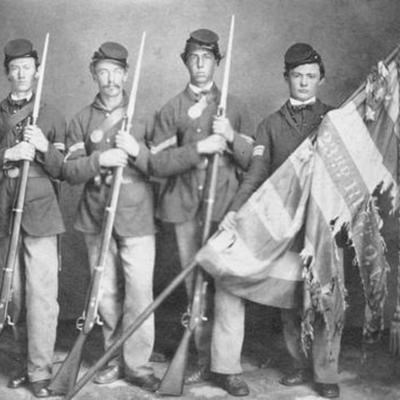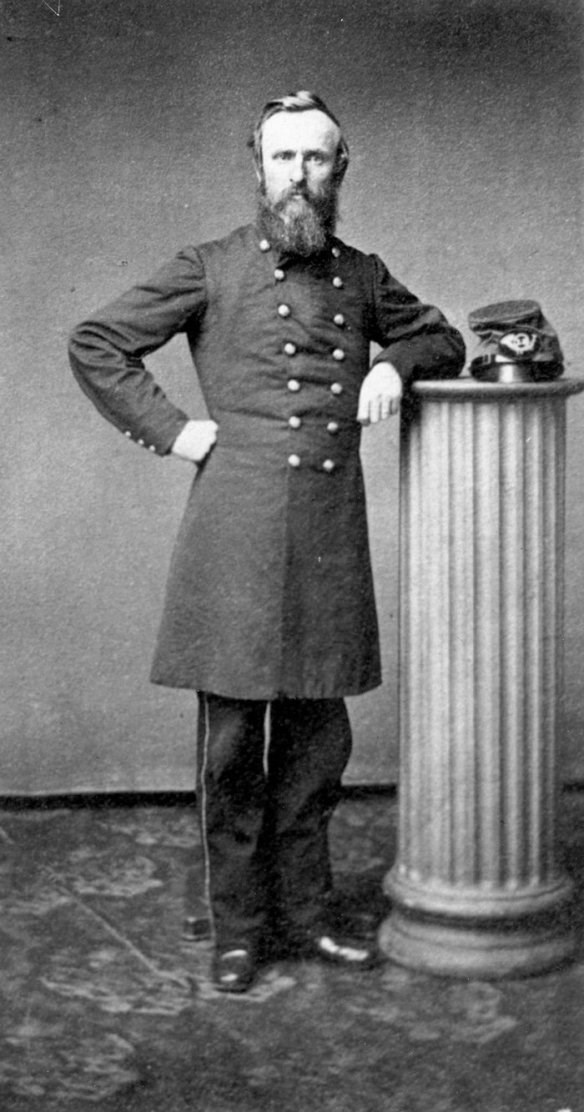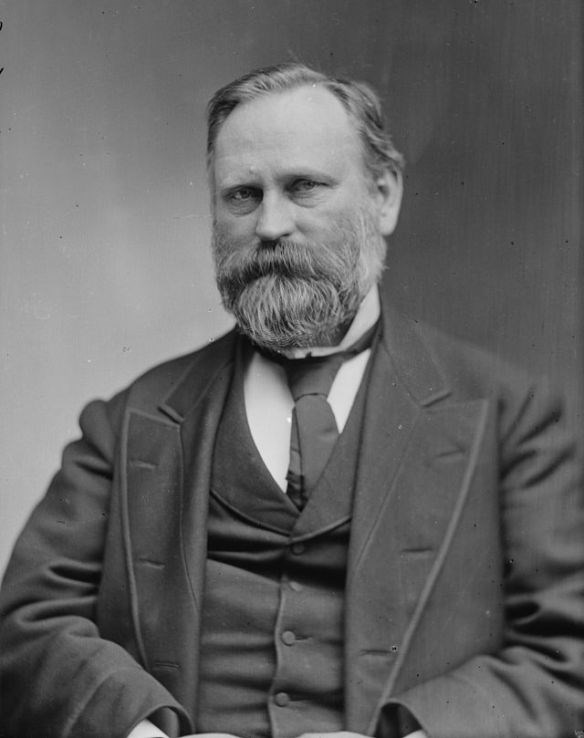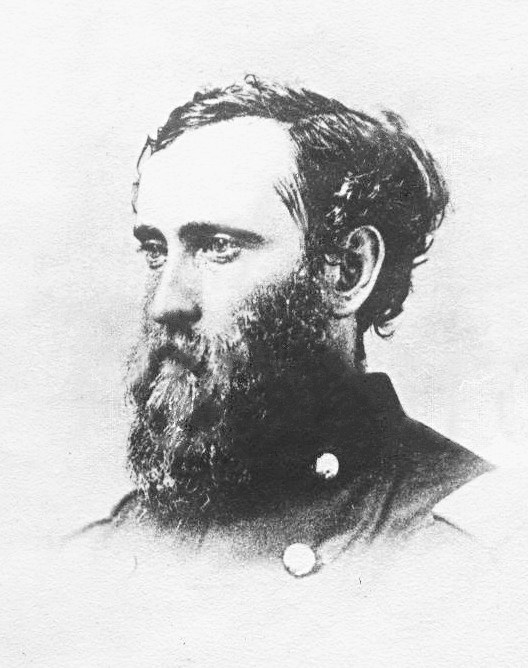Last updated: October 30, 2020
Article
Presidents and Politicians: The 23rd Ohio Volunteer Infantry

Ohio Historical Society
At the end of the Civil War, many Union officers from Ohio were able to transfer their careers to the political arena. Some were quite successful; others were not. The 23rd Ohio Volunteers had the honor of delivering two future presidents, a Supreme Court justice, and an ambassador to Hawaii.
The 23rd OVI was mustered into service in July 1861 at Camp Chase in Columbus, Ohio. The regimental commander would be William Rosecrans, a man destined for both praise and scorn during the course of his military career. His staff officers were two graduates of Kenyon College: Lieutenant Colonel Stanley Matthews and Major Rutherford B. Hayes. Among the enlisted men was eighteen-year-old William McKinley.
Before leaving Camp Chase, the regiment nearly chose to go on strike. The soldiers went ballistic when they received old muskets probably left over from the Mexican War. Many of the boys refused to accept the ancient guns. While the dispute raged, the officers were alarmed to learn that General John C. Fremont was on his way to inspect the new recruits. A genuine concern developed that the soldiers of the 23rd would boycott the inspection. After much debate the boys agreed to appear in front of General Fremont but still argued they would not go into battle with the outdated weapons.

Rutherford B. Hayes Presidential Center
While officers tried to coerce the soldiers, Major Hayes went from tent to tent and talked things over with his men. He made no threats, but quietly reminded everybody they had an obligation to defend their country regardless of the poor weapons issued. He assured them better muskets would eventually be issued. The soldiers were impressed with Hayes’s words and agreed to accept the guns. Private McKinley would remark that his fellow soldiers were won over by Major Hayes and readily accepted him as their leader.
Lieutenant Colonel Matthews would not enjoy the respect of his troops. A political appointee, Matthews did not have the ability to instill confidence in his regiment. He was a lawyer by trade, serving as United States Attorney for the District of Ohio. His courtroom skills did not translate well to the Union army. Within a year he would resign from the 23rd.
With Matthews gone, Major Hayes received a promotion to Lieutenant Colonel. By April of 1862 he was appointed commander of the regiment. He proved to be an aggressive leader, always eager to give battle. Sometimes the battles were with superior officers. He tangled with Major General Jesse Reno, who was enraged when the men of the 23rd were caught pilfering straw for their horses and camp site. Hayes defended his soldiers, advising the general he would pay for the straw if need be. After a few tense moments Reno calmed down and headed off to rejoin his division. Hayes was already well thought of by his men. Now they would run through a brick wall for him.
In September 1862 the 23rd was heavily engaged in the battle of South Mountain during the Maryland Campaign that culminated with the bloody battle of Antietam. Hayes ordered his regiment to charge. Moments later he was shot in the left arm, but stayed on the field while the fight continued. Later he was moved to a field hospital and eventually recuperated at home in Ohio.

William McKinley Presidential Library
Hayes missed the battle of Antietam, but Commissary Sergeant William McKinley would prove himself a hero there. The 23rd was on the field all day, taking part in one of the most horrific battles of the Civil War. They had entered the fight without eating breakfast and by late afternoon were exhausted and desperate for food. McKinley seized the moment by loading a wagon with rations and coffee. He took one volunteer with him and rode into the fight. He was stopped by several Union officers who warned him to turn back. The sergeant ignored the advice and spurred the horses forward. A rebel cannon shot damaged the back of the wagon but McKinley did not stop until he reached the 23rd. Word of his bravery reached Hayes, who recommended the nineteen-year-old for promotion to second lieutenant. Several weeks later McKinley was an officer.
Hayes, now a colonel, returned to command in November of 1862. His place had been taken by Major James Comly, a competent officer and a good friend. Along with leading the 23rd, Hayes was given command of the First Brigade of the Second Kanawha Division consisting of the 23rd, the 89th Ohio, and two cavalry companies. They saw little action until July of 1863 when the brigade gave chase to Confederate General John Hunt Morgan and his raiders. The rebels had entered southern Ohio via Kentucky, intent on causing as much mayhem as possible. The first Brigade caught up with Morgan on July 19th and followed him to Buffington Island, where the raiders surrendered.
For the balance of the year the First Brigade did not see any significant action. In July of 1864 they were involved in the battle of Winchester, Virginia. The Confederates pushed back Hayes’s brigade, forcing them to a defensive position behind a lengthy stone wall. While holding firm, Colonel Hayes realized the 13th regiment had been left behind. He ordered Lieutenant McKinley to ride through the Confederate position and return with the lost soldiers. McKinley galloped forward, dodging bullets and cannon shot. The Union officers had their spyglasses on the rider, amazed that he was still upright in the saddle. McKinley passed the Rebel lines and continued riding until he located the 13th. He brought them back to the Union lines unscathed, and ready to continue the fight. Another promotion for McKinely was in the works, this time to captain.
There would be more honors for Hayes and McKinley. In December Hayes would be promoted to Brigadier General and McKinley to brevet Major. Both men continued to fight to the utmost. While directing his brigade in one battle, Hayes’s horse was killed, causing the general to take a nasty spill. He fell unconscious causing some of his soldiers to think their commander was dead. He roused himself only to see his brigade retreating with Confederates closing in from all directions. General Hayes scrambled to his feet and somehow staggered his way back to safety. A spent rebel bullet struck him in the head, a perfect end to a day of intense fighting.
Once again Major McKinley would leave the safety of his lines, this time to identify cavalry that was too close to the Union position. He galloped forward directly into a company of Confederate riders. The chase was on but the amazing escapades of the daring young officer would not be ended here. To the astonishment of his fellow officers he outran the pursuing Confederates, arriving safely at the Union position. In four years of service McKinley had risen from a volunteer private to a major while still in his early twenties. He mustered out of the army, studied law, and soon became a prosecuting attorney. Similar to his military career, he took the field of politics by storm. In short order he was a Republican Congressman, Governor of Ohio, and in 1896 elected the 25th President of the United States. McKinley won a second term but was shot by a suspected anarchist and died on September 14, 1901.

Library of Congress

The men of the 23rd Ohio Volunteer Infantry performed admirably during their time in the Civil War. They were skillfully commanded by a fearless Rutherford B. Hayes. Major William McKinley displayed immense courage time and again on the battlefield. Stanley Matthews had some deficiencies in command, but proved to be a capable member of the Supreme Court. James Comly served his general well and was rewarded for his efforts by representing the United States in one of the elite assignments any non-politician could hope to get. The 23rd OVI left quite a legacy during the war, and continued doing so for many years to come.
Written by Scott Longert, Retired Park Guide, James A. Garfield National Historic Site, September 2014 for the Garfield Observer.
